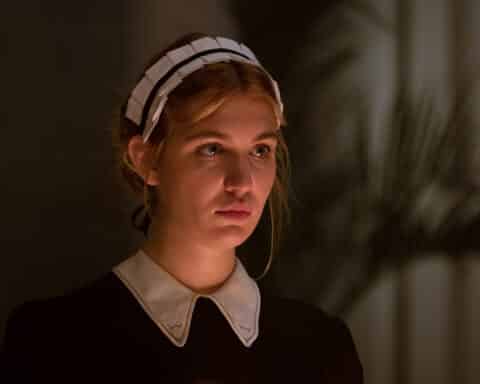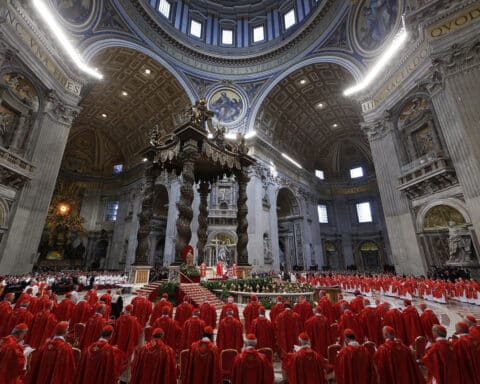Humans are wired to seek the truth. God created us that way. It helps us in finding God who is Truth itself. While science and math give us measurable facts, the place where we reach real, intangible truth is usually in our stories.
Good fiction helps us recognize who we are, who we want to be and how to live a life of courage, honesty, endurance and compassion. There’s a reason that Jesus told so many parables, after all. If you’ve got the choice between a detailed lecture and an exciting story, which one would you pick?
In today’s world we may come across few parables, but we do have an abundance of novels and short stories. Here are 10 good stories for you to try. Some of the authors are Christian, some are not, but all have truth at the heart of their tales — in a very entertaining package.
“The Epic of Gilgamesh” (2100 BC)
Just because a story is 4,000 years old doesn’t mean you won’t understand it. The basic plot is a lot like a modern superhero movie.
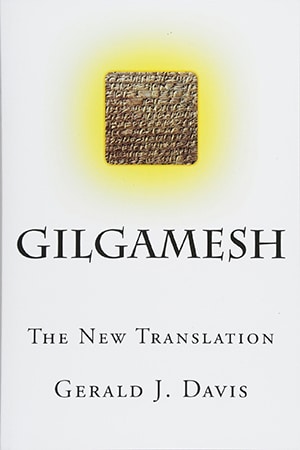 Gilgamesh (half-god) is the cruel king of Uruk. He and good-hearted Enkidu (monster slayer) become best friends after an epic wrestling match proves them equals. When Enkidu dies, the grieving Gilgamesh hunts the key to immortality. But nothing he finds changes the fact that every person must die. Gilgamesh returns to Uruk and becomes the good king that the people wanted all along.
Gilgamesh (half-god) is the cruel king of Uruk. He and good-hearted Enkidu (monster slayer) become best friends after an epic wrestling match proves them equals. When Enkidu dies, the grieving Gilgamesh hunts the key to immortality. But nothing he finds changes the fact that every person must die. Gilgamesh returns to Uruk and becomes the good king that the people wanted all along.
Food for thought
This epic still has fresh translations being published and is alive and well in modern music, television and video games. We understand Gilgamesh because people have not changed. Societies, cities, fashions and food, yes. People, no.
For example, Gilgamesh and Enkidu have the kind of friendship we all want. It brings out their nobler qualities and transforms them into better people. When Gilgamesh is overcome with grief at Enkidu’s death, it reminds us of the loved ones whose deaths leave a huge hole in our lives. And when Gilgamesh is proud of his city when he returns, we realize that he now sees his home as a haven and a joy in life, just as it should be for us.
Through a Christian lens
Compare Gilgamesh to Genesis 1-11 to really understand how different the Bible is compared to the stories that other ancient people were telling in the same time period.
Although both have similar storytelling elements, such as a tricky serpent or an ark used to save people from a huge flood, the moral lessons and views of God are very different between the two.
That’s because the Hebrew people explained how those elements show the truth about God that was missing from the pagan understanding. This is similar to how a Christian interprets certain events today differently than a secular person might.
Note: Gerald J. Davis’s translation is clear and accessible. His foreword has just enough explanation and no spoilers.
“The Scarlet Letter” (1844) — Nathaniel Hawthorne
High school English teachers have ruined “The Scarlet Letter” for generations of students. As an adult, however, you realize that it’s about sex, guilt and revenge. It’s wasted on teenagers.
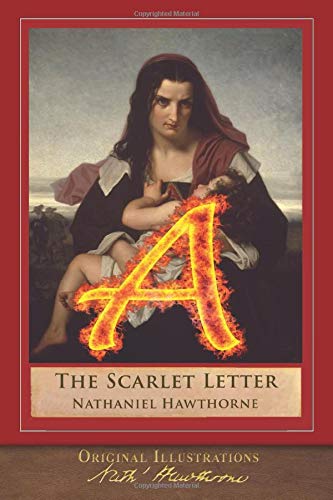
Food for thought
“The Scarlet Letter” looks at very modern topics. The young woman in a loveless marriage who falls in love with a prominent man bears the burden of public condemnation. Meanwhile, her unidentified lover becomes increasingly influential.
This book examines the price of endless guilt, which robs the lover of all peace of mind and health. Hester, by accepting punishment and supporting herself, becomes independent and beloved. Hester’s husband spends seven years tormenting the lover, thereby losing his humanity. All are measured by their personal relationships to God and each other.
Through a Christian lens
Puritans and adultery provide fertile ground for religious reflection. Hawthorne makes sure we understand his points by comparing and contrasting Hester, her lover, her husband and local Puritans.
Our relationship with God is often measured by how we treat and are treated by others. The Puritans are legalistic and unforgiving. Hester and her lover learn through their suffering to rely more closely on God and that his grace is merciful to the repentant.
As a Catholic, I especially appreciate that the lover only achieves spiritual freedom and closeness to God by confessing his sins to others. This was really unexpected, but it worked on several levels.
“Uncle Tom’s Cabin” (1852) — Harriet Beecher Stowe
Contrary to what you expect, this is a fast-moving soap opera loaded with interesting characters and cliffhangers that keep you on the edge of your seat. I love it.
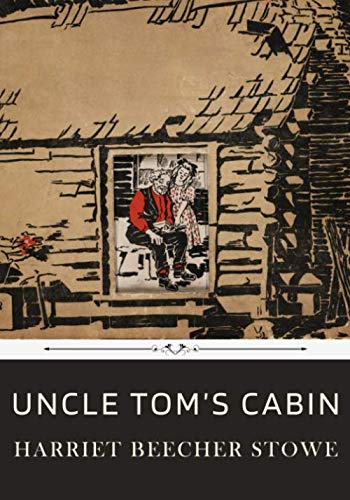
Food for thought
Underlying everything is the question of what it means to be free. Stowe was writing to make one point: Slavery is evil. She took a careful look at everyone involved, using subtly portrayed people to demonstrate that slavery is bad not only for the slave but for everyone who is not trying to stop it. Freedom in this sense is more than physical enslavement. This is vividly shown through a number of situations, especially in runaway slave George Harris’s struggles with his bitterness and anger.
Through a Christian lens
You’ll never get a more thorough discussion of Christianity in a novel. Selfless Christian love is the answer to slavery and also every other problem in the book. Stowe shows just how hard it is to live up to that love. One of my favorite situations is Miss Ophelia’s struggles with Topsy, as the New England spinster realizes her long-held ideals do not hold up to actually loving a traumatized slave put in her care.
By the end of the book we are left reflecting on our own love and whether we live our ideals face to face.
“Dracula” (1897) — Bram Stoker
“Dracula” is about good versus evil. Period. You won’t find any sparkly, angsty, modern vampires here.

Food for thought
Ignoring what is true in favor of our own stereotypes leads to disaster. For example, just like today, a lot of people in “Dracula” have difficulty accepting the supernatural as reality. They deliberately ignore what they can’t explain. Our heroes scoff at superstition when lower classes offer rosaries and garlic, only to find out later that it is effective. They deploy new technology like telegrams, typewriters and trains only to have them fail at crucial moments.
Similarly, the book challenges social stereotypes. The uneducated are wise. Foreigners contribute valuable knowledge. Women equal men in their intelligence and innovation. When they are marginalized in the book, Dracula begins to win.
Through a Christian lens
In this book, the Eucharist and the crucifix have real supernatural power. They aren’t just symbols. The true presence of Christ is what repels Dracula. Dracula compels others to shed their blood for his eternal life. Jesus’ shedding his blood so we may have eternal life is the ultimate good that Dracula cannot bear.
Ultimately we see that Dracula’s selfishness is the perversion of Christ’s complete self-giving. When our heroes’ unselfishness echoes Christ’s then they are their most effective. This is taken to Christ-like levels in Mina Harker’s reminder to the men that Dracula himself once had a soul.
“The Virginian” (1902) — Owen Wister
If you like reading Westerns, you can thank “The Virginian,” which was the first Western novel. Noble cowboys, cattle rustlers, gunfights, courting pretty school marms, and much more were found first in this book.
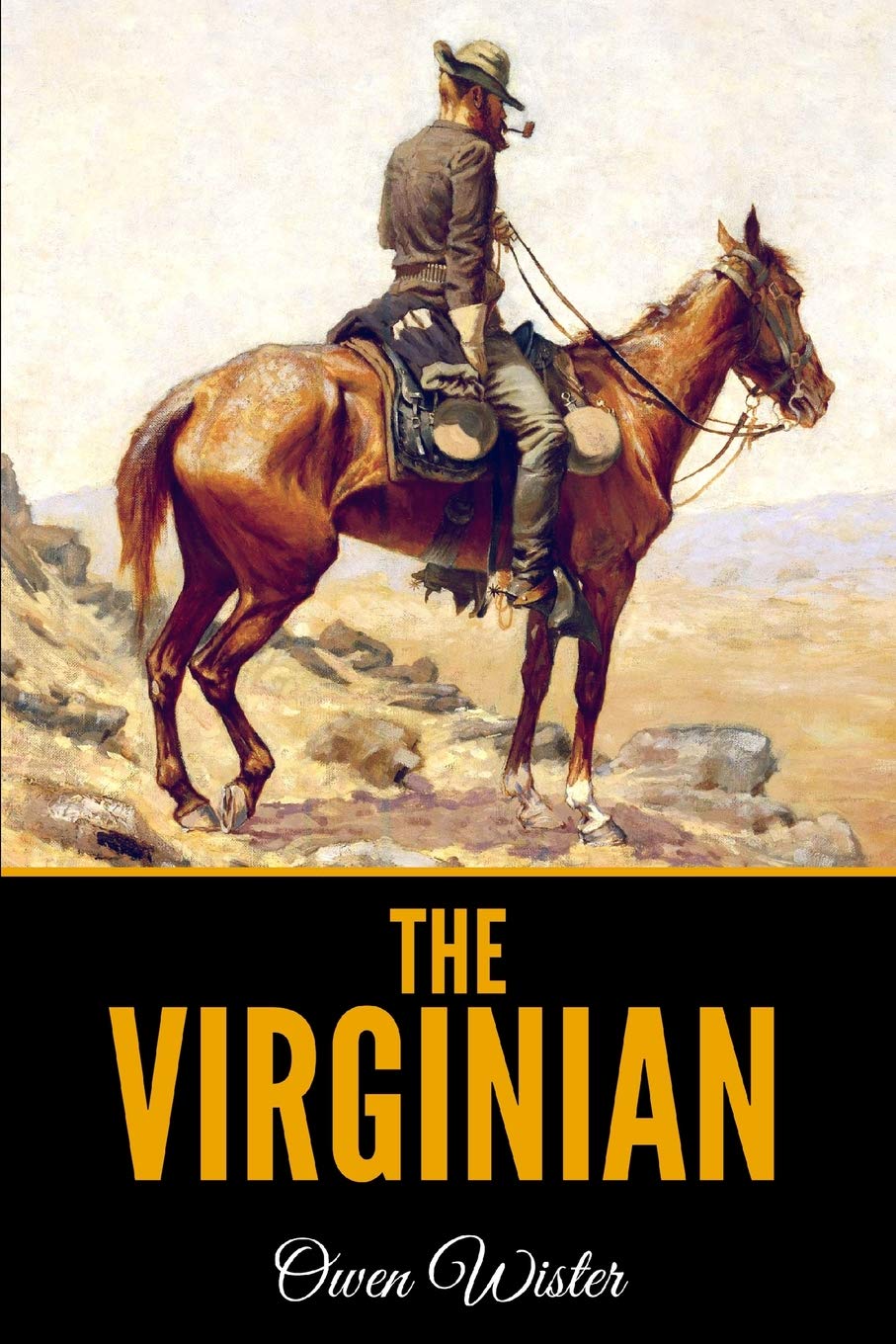
Food for thought
Amid the Western trappings is a wonderful character study told in surprisingly contemporary writing. Westerns are often morality tales, and we see both the tenderfoot and Molly grow as they learn how the Virginian’s code of honor is applied to everyday life in the uncivilized West. This is the first time a cowboy was portrayed as a hero, and the Virginian is the strong, silent type with an unwavering code of chivalry. This code of manliness gives us all a standard to strive for.
Through a Christian lens
If someone in this story isn’t Christian, it is only because they are a no-good outlaw. It’s as straightforward faith as you would expect in the wild West. The Virginian and his sweetheart are our models of Christian behavior. They don’t always agree on how to live their faith, but that’s usually more a matter of cultural understanding than of the faith itself. For example, whether or not to show up to a gunfight can become an interesting look at different approaches to turning the other cheek.
“And Then There Were None” (1939) — Agatha Christie
Agatha Christie is one of the best-selling mystery writers of all time, known for her ingenious plots. This is one of her most famous and raises fascinating questions about justice.

Food for thought
Life is full of chaotic moments we may never understand, but a mystery has a definite solution. No wonder we love them.
This complex mystery examines one of life’s big questions — man’s inhumanity to man. Christie gives us a group of people who we quickly learn are murderers, and she explores the different results of intention and a guilty conscience. As we see them being picked off, we have different inclinations of wanting either justice or mercy. Is there only one definition of justice as the killer seems to think?
Through a Christian lens
God delivers both justice and mercy by looking at what is in our hearts. The killer in this book is only interested in justice, in judging for what is perceived to be murder. At least two guests are being judged for deaths that were neither intended or premeditated. What do we have to take into account when we judge others? Are we ever justified in setting our judgment above the law? How do we balance justice and mercy?
“Prince of Foxes” (1947) — Samuel Shellabarger
Samuel Shellabarger’s novels are entertaining and historically accurate in equal parts. “Prince of Foxes” gives you both a fantastic story and a painless education in the politics of warring city states in Renaissance Italy.
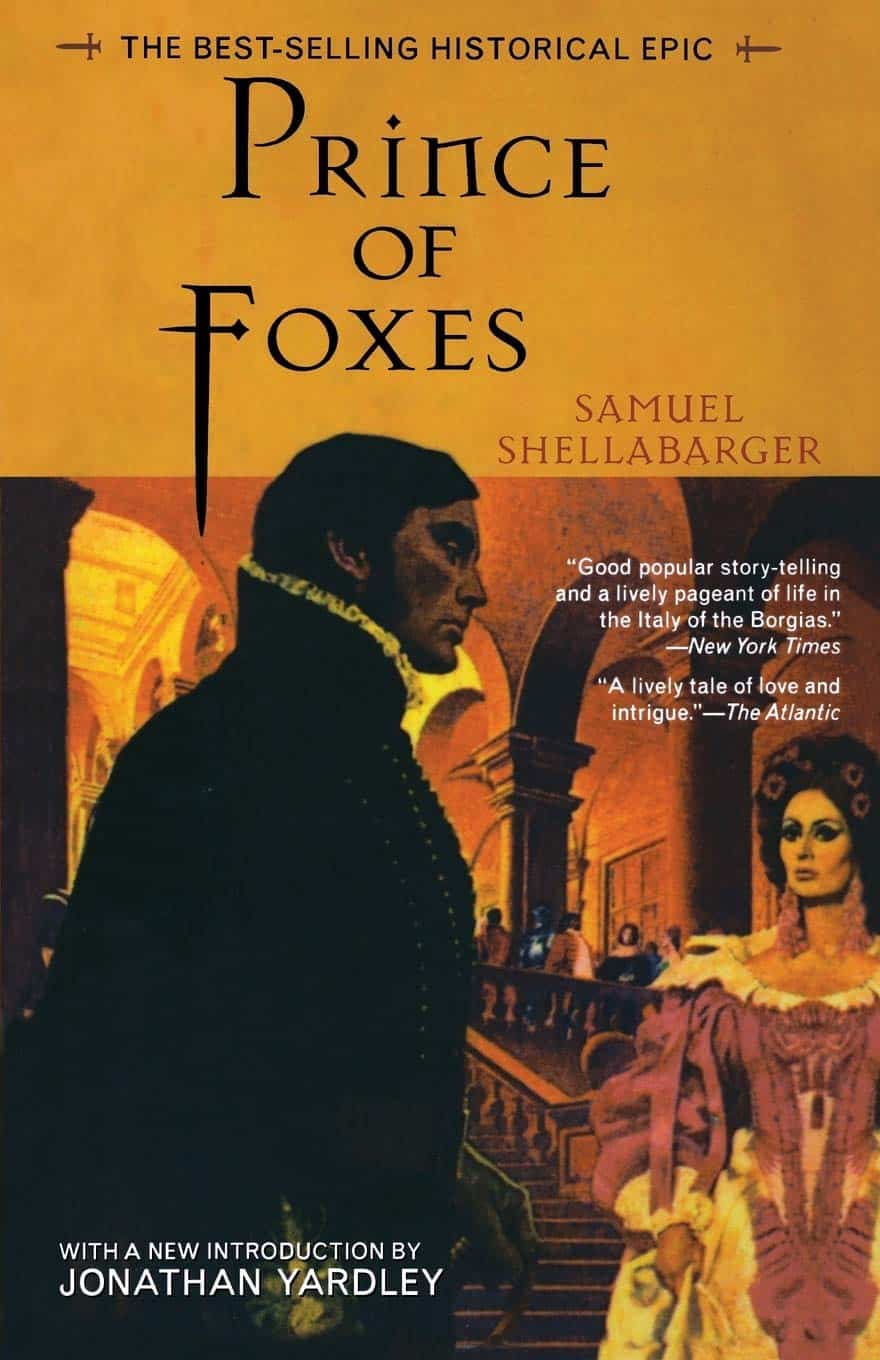
Food for thought
Andrea is climbing the ladder fast in a political climate where being cunning, scheming and unscrupulous is the only way to advance. More than one character warns Andrea that divorcing politics from morality is hollow. Andrea’s humble beginnings make it difficult to believe them. But Andrea has many secrets that would be despised by the ruling class, and as he tries to balance those with the cynical nature he’s developed, a real struggle develops about what makes life worth living.
Through a Christian lens
Amongst the corruption and intrigue, Andrea and his sidekick, Mario, are inspired by genuinely good people worthy of emulation. The question is whether the inspiration will be temporary or lead to permanent conversion.
It’s an unusual historical novel that is able to authentically convey both the way a Renaissance man viewed religion and the way a scoundrel experiences conversion by God’s grace. “Prince of Foxes” does this in a genuinely inspiring way that also provides a template to weigh the many temptations of the world against our own faith.
“The Little World of Don Camillo” (1948) — Giovannino Guareschi
It is hard to find a more charming book anywhere than these humorous short stories.
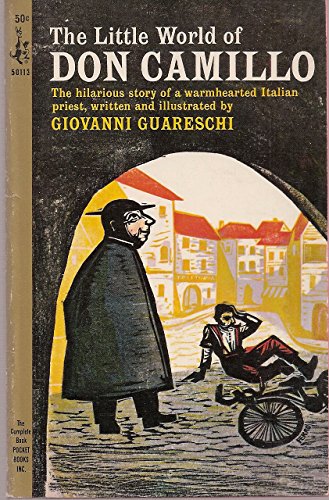
Food for thought
At first these lighthearted tales seem very simple. However, that simplicity is deceptive, and the problems that the characters must solve are often true to life and painful. Though the stories are set in post-World War II, we can still relate to the problems today.
One soon learns that Don Camillo and Peppone understand and respect one another even though it is usually buried under their frustration at the other’s stubbornness and opposite ideology. They work together for the common good. The important moments of our lives come down to how we live every day rather than on a grand ideological scale.
Through a Christian lens
The most unusual aspect of the stories is Christ on the crucifix. His conversations with Don Camillo are some of the funniest parts of the stories. Of course, Christ has a better grasp of the big picture than Don Camillo, and he is the only person Don Camillo always obeys, though not unquestioningly and often only after arguing. After all, Don Camillo isn’t unfailingly right, and moral victory can just as easily go to his opponent. We don’t get to literally hear Christ the way Don Camillo does, but talking our day over with him is sound practice.
“The Killer Angels” (1974) — Michael Shaara
“The Killer Angels” inspired both filmmaker Ken Burns to make his Civil War documentary and Joss Whedon to create the science fiction Western television show “Firefly.” That’s got to be good writing!
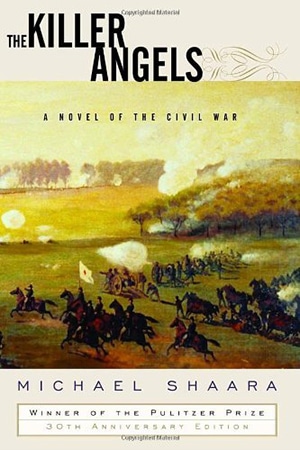
Food for thought
Michael Shaara’s clear, grounded writing shows the humanity, the flaws, the errors and the brotherhood and love of these men, as well as the tragedy of the battle. This is set into vivid relief by the fact that many of those on different sides had fought together not many years before in the Mexican-American War. No matter which side they are on or what motivates them to fight, they often think of their friends who they may meet in battle. There could hardly be a better reminder that in our contentious times, what we love about our friends and family must never be forgotten despite our very different opinions.
Through a Christian lens
There are as many approaches to faith in this book as there are individuals. We see how complicated attitudes can be and the disillusionment that arises as high-flown ideals are put to the practical test of battle. Christians are able to compare the characters’ beliefs with their own and consider what they would do when facing similar tests. What is worth suffering, dying and killing for?
“Mockingbird” (1980) — Walter Tevis
“Mockingbird” is about a dystopian future where reading just might save the world. How could I not include it?
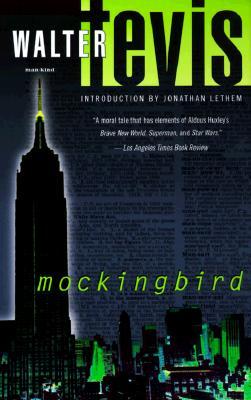
Food for thought
This book was written in 1980 but holds up surprisingly well today. It feels familiar when “Mockingbird” shows people who are apathetic, isolated and despairing because of fewer personal interactions, more time on machines, a lack of permanent relationships and no responsibilities of any sort.
What does it mean to be happy? How do we learn to think? What does it mean to be a family? These big philosophical questions are always connected with the idea that reading matters because it teaches you how to think. We see that reading helps order our thoughts in ways so ingrained that we don’t even recognize it.
Through a Christian lens
Woven through the story is understated Christian symbolism and Paul’s dawning sense that there is something bigger than all of us who can touch us personally. Of course, this is God.
In many ways, Paul’s story parallels that of Joseph in the book of Genesis. Joseph tells his brothers that what they had meant for evil, God had meant for good. Paul is torn away from everything that gives his life meaning, but ultimately his experience sets him on a literal journey of self-discovery and knowledge, which will save not only him but may also help save humanity.
Julie Davis writes from Texas.



